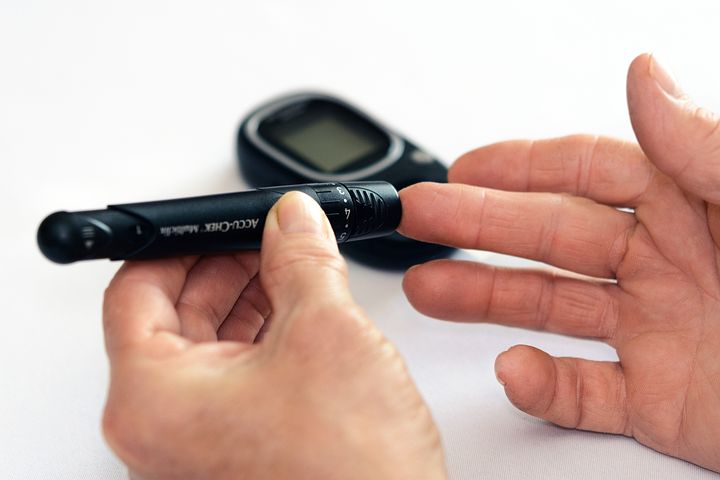Monitoring blood sugar is not just for diabetics. It can be a tool that can assist you to find the best diet for your individual needs, as well as discover problems early in order to resolve them before they develop further.
- Get a blood sugar test kit. You can find these kits in every pharmacy and drug store. Or get it from Amazon or Ebay. I have one like this: https://www.ebay.com/itm/Abbott-Freestyle-Freedom-Lite-Blood-Glucose-Meter-Kit-Lancets-Lancing-Device/283942070686?hash=item421c44299e:g:s1kAAOSwkJJfBjwX
- Take your blood sugar at the correct times. Usually this is
- when you get up in the morning, before eating – this is your fasting blood sugar
- half an hour after a meal – to see how much change the meal is causing (this is NOT the standard but it can be useful)
- one hour after a meal (this is the standard for monitoring during the day)
- two hours after a meal
- With the next meal and in between meals you can get readings so you can figure out the range of high to low for you, and also how foods affect it
- It helps to keep a log of blood sugar and also what you have eaten
Someone with poor blood sugar regulation may see blood sugar spike to over the amount considered to be within a normal healthy range. This range is from a low of 70 or 80 to a high of around 140 to 160 or a bit more, perhaps up to 180. It should not stay at the higher levels for long.
Really high readings (above 190) or really low readings (below 70) of course indicate the blood sugar regulation system is not working well.
The tighter and lower the range, in general, the better. For example within the range of 70 to 140 is considered very good/normal. A well functioning blood sugar regulating system won’t allow blood sugar to vary much beyond these limits. The body is stressed by wide fluctuations and these eventually lead to diabetes, metabolic syndrome, obesity and other problems, if unchecked.
The range of what is acceptable differs a bit depending on the source you consult.
If you find that 1/2 hour after a meal blood sugar spikes really high (let’s say just for example it goes to 200) but it is “normal” an hour after a meal there may be a problem beginning. Its helpful to catch problems as they develop rather than wait until problems are severe.
If blood sugar tends to drop quite low such that you get shaky, lightheaded and weak, there is also likely a problem. If you are not sure if blood sugar is what is causing weakness or shakiness, etc, then it is useful to do this testing in order to find out. Other problems can be the cause of these symptoms.
Learning how your blood sugar responds to various foods can be a starting point for determining what foods are best for you. A high carbohydrate food such as white potatoes or corn can affect one person with blood sugar regulation problems very differently from another person with blood sugar regulation problems. We are all individuals! This is why taking your blood sugar readings can assist you in determining the best foods for you as an individual. This is also one reason why glycemic load or glycemic index estimates can be only rough indications of the actual effect of a food on a person’s blood sugar regulation system.
Often just knowing your own individual tolerance for carbohydrate foods can help greatly in determining the best diet for you. Many serious illnesses have poor blood sugar regulation as a component, and many more “minor” annoying symptoms do as well. This is because blood sugar regulation involves so many different systems in the body, and blood sugar balance therefore affects many systems in the body. Also for these reasons, poor blood sugar regulation can be a fairly sensitive early warning sign that there are problems or that they are developing.
Article by Sheila Dobson, NC
All articles are for educational purposes only. Please consult your qualified health professional for individualized guidance.

